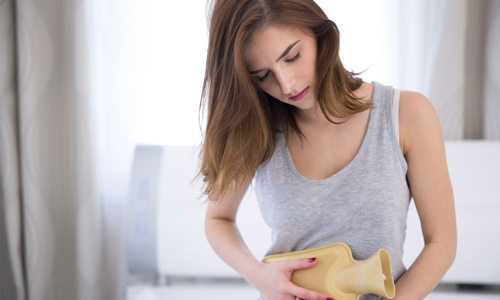
Female reproductive issues are not a remote possibility. In fact, uterine fibroids are common in women, yet only 20 to 30% will show any symptoms. Without warning, the size of the lump may increase to the point that it affects other nearby organs, resulting in worsening symptoms or more complicated treatment. Paying attention to the warning signs and being aware of this disease is important.
Understanding Uterine Fibroids
Uterine fibroids are a disease of the uterine muscles, in which non-cancerous growths develop in or around the womb (uterus). The growths are made up of muscle and fibrous tissue and vary in number and size. The condition is most common in women aged 30 to 40 years. It is still unknown what causes most uterine fibroids, but the hormones estrogen and progesterone, which are produced by the ovaries, can stimulate the growths to increase in size. Consequently, growths that occur near or after the onset of menopause are generally smaller.
Types of Uterine Fibroids
Fibroid types are defined by where they grow in relation to the uterine wall.
- Subserosal Fibroids: These fibroids occur on the outside of the uterus. If large enough, it may press into other organs or cause severe pain.
- Intramural Fibroids: These fibroids occur within the muscular wall of the uterus. Depending on the size and location of the growth, it can result in menstrual pain, heavy menstrual bleeding, or infertility.
- Submucosal Fibroids: These fibroids grow just under the thin layer of tissue in the uterus and can result in irregular menstruation, menstrual cramps, infertility, and possible miscarriage.
Symptoms
Women with uterine fibroids may or may not experience any symptoms. If symptoms are present, they may vary based on the number and type of growths. However, several important symptoms should not be ignored:
- Pain in the pelvis or lower back
- Heavy bleeding between or during your periods
- Frequent urination or difficulty urinating
- Constipation or pain in the rectum
- Pressure, fullness, swelling, or feeling of a lump in the lower abdomen
- Acute pain with fever and nausea if the growth occurs outside the uterus and ruptures.
Diagnosis
Diagnosis can be made by ultrasound examination when the details are clearly visible. Other than that, diagnosis can be made by endoscopic examination of the uterus or abdomen.
Treatment
Surgery to remove very large or multiple growths may be performed. This is known as a myomectomy. Alternatively, the uterus may be removed via a hysterectomy. The difficulty of either procedure is dependent on the size, number, and location of the growths.
1) Myomectomy A myomectomy can be performed several ways. Growths can be removed via laparoscopic surgery. Another technique is known as minilaparotomy myomectomy, which only requires an incision of 6 cm or less. Finally, an open abdominal myomectomy can be performed.
In the past, if the tumor was larger than 5 centimeters, the tumor had to be surgically removed through the abdominal wall. But now, uterine fibroids larger than 5 centimeters can be surgically removed through laparoscopic surgery, which greatly reduces the chance of blood loss and shortens recuperation time. Critically, these outcomes are dependent on the expertise of the doctor.
It’s also important to note that fibroids grow back in 25 to 30% of patients who undergo surgical removal. Following surgery, the patient is still able to have children but should consult with a doctor.
2) Hysterectomy The uterus can be removed transvaginally (vaginal hysterectomy), laparoscopically, via a small 6-cm incision (minilaparotomy hysterectomy), or via an open abdominal hysterectomy. A hysterectomy is commonly used in patients who no longer wish to have children.
Uterine Fibroids and Cancer
Many people wonder if uterine fibroids can become cancerous. The answer is that there is a chance, but it is very small. Most tumors are benign and more than 80% will never become cancerous. Additionally, uterine fibroids rarely cause complications. If complications occur, it is commonly where the uterine fibroid has pushed against a nearby organ, such as the ureter tubes, which can cause kidney disease.
The best way to prevent or treat uterine fibroids is to have a yearly gynecological examination. However, if you experience any abnormal symptoms, you should consult a doctor immediately.